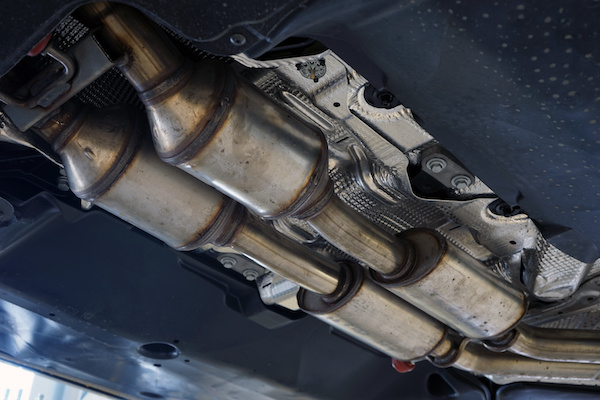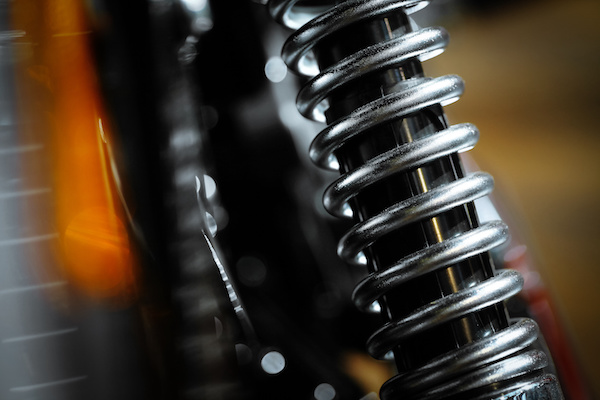Posted on 4/27/2022

A catalytic converter is a device that's fitted to the exhaust system of your car. It allows your vehicle to operate more cleanly and efficiently by burning off harmful pollutants before they have an opportunity to pollute the air around you. Catalytic Converters are required on all vehicles, new and old. For a while now, cars have been required to have catalytic converters with them at all times (which is why you may see the name on your vehicle's engine). Catalytic converters use an oxidizer such as a special type of varnish made from ammonia, urea, and water. This substance reacts with gasoline to create an air-fuel mixture that can be used in an internal combustion engine. The converter does not actually burn the fuel; it simply tricks the car's internal combustion engine into making it think that it has already burned all of the fuel in its cylinders by releasing small amounts of unburned gas back into the intake system. With greater efficiency comes reduced emission ... read more
Posted on 3/23/2022

From this title, you may be confused about what we mean when saying, "successfully" buying a used car. The reality is that buying a used car can be risky, and it can come with a lot of headaches if you're not careful. When you're looking to buy a used car, especially from a private seller, there are certain things you should do beforehand to solidify your decision. Do Your Research - You may find a vehicle that fits below your price range with better mileage or quality than you ever expected. Sometimes, all of it can seem too good to be true, and you don't want to get scammed. So please remember to research the seller, the specific make and model, and compare prices before replying to the listing. Get a Pre-Purchase Inspection - You've reached out to the seller, and you go to look at the car yourself. Unless you're a professional mechanic, it may be hard to tell the true condition of the vehicle's parts. We offer pre-purchase inspections at Prestige ... read more
Posted on 2/25/2022

For comfortable, smooth, and safe driving, you're going to need functional suspension parts. To be specific, your springs, shocks, and struts play a major role in absorbing the impact of bumps in the road. If any of your suspension components, you're going to notice a difference in how your vehicle drives. Below are some symptoms that indicate you need suspension repairs: Drifting Drifting during your turns is a cause for concern. If you experience trouble maneuvering your vehicle, your suspension could very well be the culprit. Bouncy or Bumpy Drive If hitting minor bumps in the road, or even speed bumps, causes continuous springing, it is a major sign that your suspension is in trouble. Your shocks and struts are supposed to tame the effects of this. Uneven Tire Wear Your car's tires may have trouble properly making contact with the road with faulty suspension parts. Therefore, you may notice uneven tire wear and bald spots. Nosediving If you notice your ca ... read more
Posted on 1/27/2022

Valentine's Day is the perfect opportunity to show that special someone in your life how much you care about them. If your significant other happens to be a car enthusiast or is someone who is in desperate need of some car care help, why not give a car-themed gift for your Valentine's Day gift! If your loved one has trouble getting to the shop or isn't always on top of their vehicle maintenance, we have an idea for you. Why not gift them a gift certificate for a vehicle service that they've been putting off. Better yet - ask to borrow their car for a few hours. Bring their vehicle into our shop, and we'll take care of that service for you. They'll be overjoyed that you took the time to get their car running safely and took that burden off of their shoulders. Another idea is new windshield wipers or car mats. Windshield wipers typically need to be replaced every 6 months or so, so they are probably due for a new set. Car mats are also a great gift to keep their ... read more
Posted on 12/23/2021

In March of 2020, as the COVID pandemic began to take grip and the government's of countries worldwide started enforcing stringent lockdowns to help contain the spread of the virus, many employees started working from home. Likewise, schools were closed, and education went online like many other aspects of our lives. Almost two years on, some of these aspects have remained, as employees came to realize there was no need to commute an hour in traffic every day to perform a job in a cubicle they could efficiently perform from the comfort of their couch. Employers have learnt that they need to start offering this new way of working, or a hybrid model, to retain their workforce or attract future talent. What with online schooling, grocery deliveries, and home workout routines; these factors, in turn, have led to less reliance on our vehicle's daily use. So if you're finding your car sits idle for long periods more often, here are some tips to ensure it stays in working condit ... read more